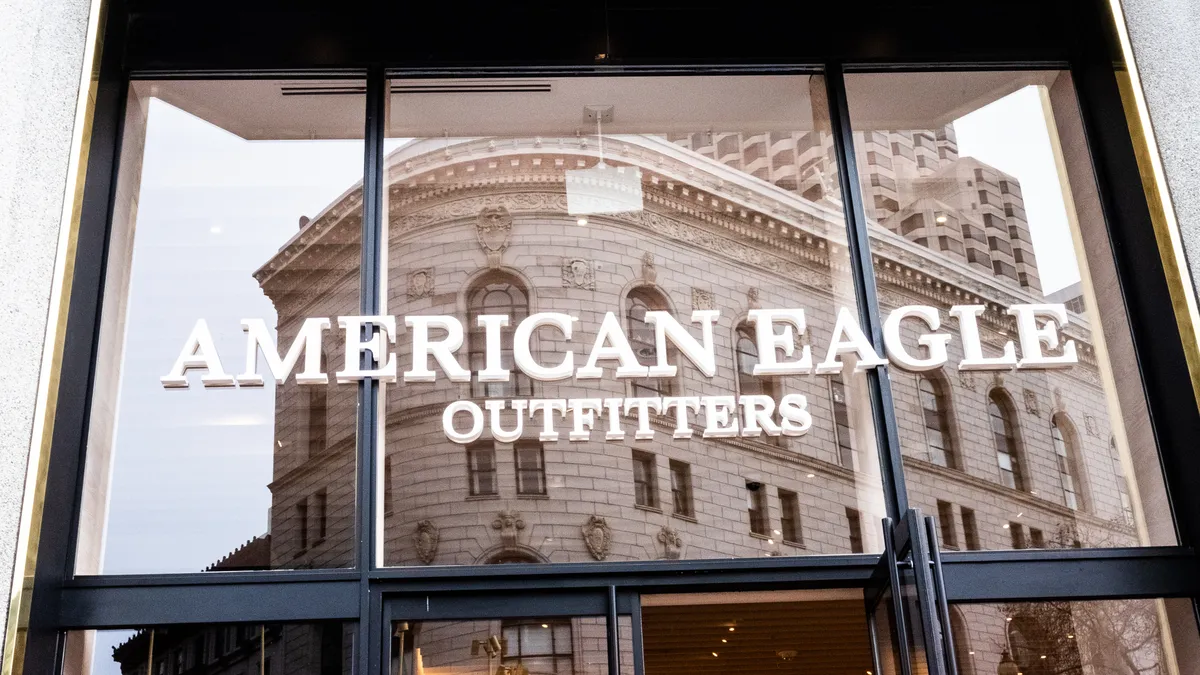Dive Brief:
- American Eagle Outfitters has improved turn times, thanks to its supply chain transformation that has taken place over the last year. Under its new model, the retailer reduced SKU counts to focus on the "the most productive styles," COO Michael Rempell said on the company's earnings call last week.
- The transformation involved opening multiple regional distributions centers during the company's previous quarter. This allowed it to pull three weeks of inventory out of stores and into this network to keep in-stock levels up, while providing more options on where the inventory can go, Rempell said.
- The retailer had fewer shipments per order, and it delivered to consumers 1.5 days faster compared to Q1 2019, the COO said.
Dive Insight:
American Eagle has been outlining its plans for a supply chain overhaul for the last year, saying it will help to better capture and fulfill digital sales. The infrastructure at the heart of it are hubs in Boston, Los Angeles, Chicago and Jacksonville, Florida, executives said on previous earnings calls.
"Working in conjunction with our primary fulfillment centers, these hubs will provide improved delivery performance, cost benefits and sufficient capacity for us to manage digital demand for the back half of the year," Rempell said last year.
With these hubs now operational, the company noted benefits from the investment.
"We've replenished stores much faster. We shipped to customers about two days faster," Rempell last week. "We reduced our delivery costs, because our e-commerce shipments were coming from local markets, in some cases, using regional carriers."
Organizing regional supply chains is a growing focus in the world of e-commerce. Having more supply chain centers can decrease transportation costs, though it increases facility cost. It is also traditionally thought to increase inventory cost, but American Eagle said it seeks more "flexibility" in its inventory.
The ability to have inventory available for store and digital sales means retailers can cut back on the amount they carry in an increasingly omnichannel landscape.
Still, in the most recent quarter, American Eagle Outfitters' overall inventory — this includes the brands Arie and American Eagle — was up 2% compared to 2019, which it said was mostly due to higher levels in its Arie brand to keep up with demand. Inventory was up almost 11% compared to 2020. And inventory for the American Eagle brand declined in part due to the "inventory optimization initiatives," the company said in its financial filings.
"The inventory reduction and the changes we made to supply chain are structural, and their capabilities that we deployed last year that we expanded in the first quarter, we're going to be able to build on throughout the year," Rempell said.
Rempell did not expand on what exactly the next steps would be in the company's supply chain transformation. But he said American Eagle plans to "expand the distribution presence" and add scale to the company's supply chain. One area where this could occur is returns.
"With digital sales increasing, many retailers are dealing with increased returns," Rempell said. "Our challenge is, how can we make that a great experience for the customer? How could we refund money quickly; how can we get that inventory returned quickly and back into the spot where we're most likely to sell it?"
He noted that the retailer has partnered with a company to improve its returns process and invested in technology that is also expected to help. Managing returns is a big question for retailers in the age of e-commerce as it can be easier for brands to throw the inventory away than to get it back into their supply chains and stores, creating a sustainability challenge for brands that offer free returns.
















